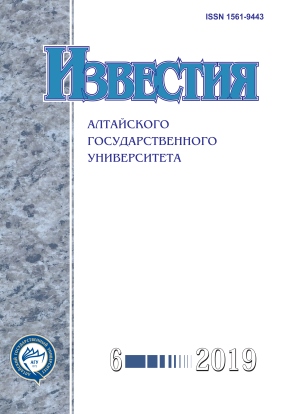Car as a Marker of Identity: Historical Aspects
УДК 390 (=471.344) ББК 60.56; 63.4; 63.5
Abstract
This article is devoted to the study of new aspects of the demonstration of identity in the context of automotive culture and reflects the tendencies and the desire of car owners to focus on identity / identities, ethnic origin, religion, place of birth and residence. The article presents a car as an object viewed from the perspective of a semiotic approach and fulfilling a marking role. Based on the published domestic and foreign works, as well as the author’s observations, the car is characterized as a marker of identity / identities in the context of ethnicity, religion and territory. Specific examples contribute to the understanding of the possibilities of symbolic and symbolic marking to search for compatriots in urban space and car traffic, forms of attracting attention to the car and the driver personally, «calling» to other participants in the movement process.
The conducted study allows to draw conclusions that the visualization of the driver’s self-awareness on the vehicle body and the presence of marking objects in the cabin regularly demonstrate the identity / identity of the car owner. The need for self-identification with a broader community has always existed, because it gave a sense of confidence and stability. Identification with a certain region / city / rural settlement concretizes the connection not only with the territory, as place of birth or previous residence, but also a family, a wide range of relatives and friends, i.e. everything that a person values and what is really important. In a wider perception is identification with an ethnic group / people, selfdetermination of the individual as part of an ethnic community.
Downloads
Metrics
References
Урри Дж. Мобильности / пер. с англ. А.В. Лазарева, вступ. статья Н.А. Харламова. М., 2012.
Golley F. Bus Names in Costa Rica // Wester Folklore. 1978. Vol. 37(1).
Edensor T. Automobility and National Identity // Theory, Culture & Society. 2004. Vol. 21. № 4-5.
Alam Y. Automatic Transmission: Ethnicity, Racialization and the Car // Identities: Global Studies in Culture and Power. 2018. Vol. 25, № 3.
Klocker N., Toole S., Tindale A., Kerr S.-M. Ethnically Diverse Transport Behaviours: an Australian Perspective // Geographical Research. 2015. Vol. 53, № 4.
Мищенко Д.Ф. Надписи на такси в Абиджане (Кот-д'Ивуар) // Антропологический форум. 2015. № 24.
Wa-Mungai M. Hidden $ Centz: Rolling the Wheels of Nairobi Matatu // Les paradoxes d'une ville fragmentee. Paris, 2006.
Щепанская Т.Б. Движение и вещь: опыты чтения автомобиля в потоке // Этнографическое обозрение. 2016. № 5.
Исаханян А.З. Автомобильная культура в контексте современных концепций пространства // Вестник Томского гос. ун-та. Серия: Философия. Социология. Политология. 2016. № 4(36).
Корниленко Ж.В. Собственность как воплощение символического капитала (на примере автомобиля) // Вестник Волгоградского государственного университета. Серия 7: Философия. Социология и социальные технологии. 2016. № 1(31).
Ростова А.В. Способы конструирования идентичности автолюбителей: гендерные аспекты // Гражданское общество в России: состояние, тенденции, перспективы. 2015. № 1(4).
Дробижева Л.М. Этничность в современном обществе: новые подходы, старые мифы, социальные практики // Вестник Института социологии. 2010. № 1.
Тишков В.А. Междисциплинарный взгляд на историческую память и идентичность // Историческая память и российская идентичность. М., 2018.
Российская антропология и «онтологический поворот». Вып. 2. М., 2017.
Щепанская Т.Б. Вегикулярные маркеры и социальная коммуникация в «потоке» // Российская антропология и «онтологический поворот». Вып. 2. М., 2017.
Долгих М. Крылатая волчица // Национальный акцент. URL: http://nazaccent.ru/content/2185-krylataya-volchica.html.
В Казани появились автомобили с надписями Мишарин // Regnum. Информационное агентство. URL: https://regnum.ru/news/1614798.html.
В Калмыкии на автомобили наносят знаки этнической принадлежности // Medform. Самое интересное. URL: http://medform.net/12442-v-kalmykii-na-avtomobili-nanosyat-znaki-etnicheskoy-prinadlezhnosti.html.
Morris D.Z. Cars with the Boom: Identity and Territory in American Postwar Automobile Sound // Technology and Culture. 2014. Vol. 55. № 2.
Как и какие иконы размещать в автомобиле // Bigpicture.ru. Новости в фотографиях. URL: https:// bigpicture.ru/?p=592952.
Щепанская Т.Б. Диалоги с вещами: конструирование виртуального партнера в рамках инструментальной деятельности // Вестник Челябинского гос. ун-та. Серия: Филология. Искусствоведение. 2011. № 24(239). Вып. 57.
Izvestiya of Altai State University is a golden publisher, as we allow self-archiving, but most importantly we are fully transparent about your rights.
Authors may present and discuss their findings ahead of publication: at biological or scientific conferences, on preprint servers, in public databases, and in blogs, wikis, tweets, and other informal communication channels.
Izvestiya of Altai State University allows authors to deposit manuscripts (currently under review or those for intended submission to Izvestiya of Altai State University) in non-commercial, pre-print servers such as ArXiv.
Authors who publish with this journal agree to the following terms:
- Authors retain copyright and grant the journal right of first publication with the work simultaneously licensed under a Creative Commons Attribution License (CC BY 4.0) that allows others to share the work with an acknowledgement of the work's authorship and initial publication in this journal.
- Authors are able to enter into separate, additional contractual arrangements for the non-exclusive distribution of the journal's published version of the work (e.g., post it to an institutional repository or publish it in a book), with an acknowledgement of its initial publication in this journal.
- Authors are permitted and encouraged to post their work online (e.g., in institutional repositories or on their website) prior to and during the submission process, as it can lead to productive exchanges, as well as earlier and greater citation of published work (See The Effect of Open Access).








